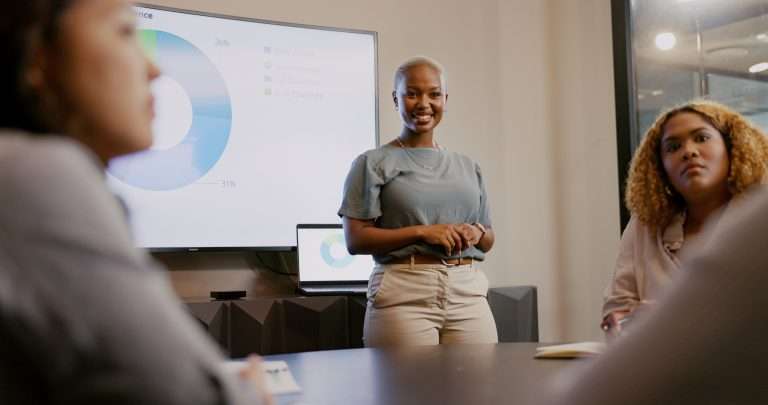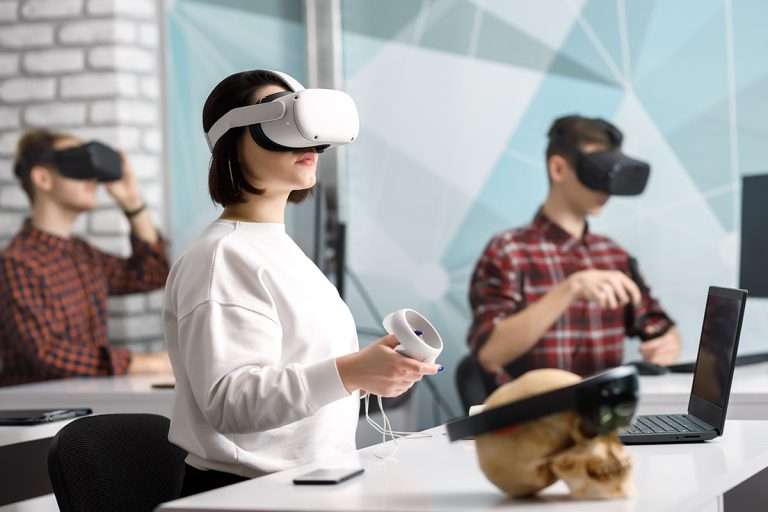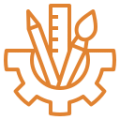At the Evergreen Clubhouse, elves can get a bite to eat, socialize with other team members, learn the latest North Pole happenings, try out prototype toys, and learn about other departments and personnel at the workshop. Each team even has a piece of the wall to decorate as they please.
Of specific interest was the monthly Christmas tree decorating contest. Each team got to decorate their tree in seasonal decor. The elves then all voted for the best tree, and the winning team got a free team lunch. Several elves, for example, mentioned one controversial winner (the wrapping team’s Halloween entry): a Frankenstein tree. Wall painting and tree decorating might seem like a trivial item unrelated to leadership approaches, but it is not.
The slow progression through the Wintergreen Clubhouse was a master class in boss-employee communication and stemmed from Merri’s conviction that the elves “are my business.” The elves knew it, too. They approached her with an openness that can be rare in boss-employee relationships. The resulting interactions may have seemed casual and spontaneous, but Merri shrewdly did several specific things:
- She left her office early so that she had time to be interrupted.
- She did not hurry through the room.
- She remembered elves’ names.
- She congratulated elves on their personal and professional milestones.
- She slyly verified that Gusta, an elf getting married, knew the transfer rules and that she and her future husband would follow them.
- She, without taking sides, willingly involved herself in solving a transportation issue between the Pole Supplies and Fleet Maintenance team leaders.
- She praised an elf for coming up with a way to improve the Toy Toolery assembly line and, rather than undercutting that elf’s leader, told the elf to take the idea to his leader first. She then asked the elf to follow up with her so that his good idea did not get overlooked.
- She congratulated an elf named Evi for receiving her ninth recognition card of the month and told Evi she was proud to know her.
- She remembered that another elf, Lars, started a new job and asked him how the job was going. She then offered to help Lars if he experienced any problems in that new job.
- She stooped down to pick up trash.
- She took a complaint from a vendor and promised to look into the solution the vendor offered.
- She listened intently as Tineke explained a conflict she was having with Yannick. Merri then, realizing that the two elves would not be able to work the issue out between themselves, took charge of arranging a meeting for the three of them to figure out how to be both safe and efficient.
Buddy, Boss, Grunt, Guide
All these interactions were aligned with one specific type of leader behavior. As Merri explained, leaders can be categorized into four different styles: buddy, boss, grunt, and guide.
- The Buddy – Friendly, wants to be liked, tends to avoid making decisions
- The Boss – Demanding, wants results, doesn’t care if it offends employees
- The Grunt – Hands-on, wants to do it themselves, often stuck in the minutia
- The Guide – Welcoming, wants team success, coaches and mentors, assists when necessary
Merri demonstrates and expects her leaders to deliver guide behavior. Guides see themselves as the ship captain, charting the course and steering the team toward clear goals and successful outcomes. They cheer on and champion team members. They set clear standards and expect the team to meet them. They encourage suggestions and actively integrate them into projects. Their enthusiasm motivates their team. Employees want to approach these bosses. The likely result is high morale, active participation, and superior results. Merri has codified these expectations of leaders into a Happiness Success Formula.
- Great leaders make elves happy.
- Happy elves make happy toys.
- Happy toys make children happy.
- Happy children make parents happy.
- Happy parents make the world a happier place.

Effective leaders function mostly in guide mode, but when a situation calls for them to switch into buddy, boss, or grunt mode, they switch for the minimum amount of time necessary. And, when the immediate need is resolved, they switch back to the default guide position.
When thinking about your and your team’s leadership approach, consider the following:
- Which of the four leadership approaches do you observe in your organization? Are they the leadership styles your organization needs? Is there an appropriate balance?
- Do your employees willingly approach your organization’s leaders, or do they try to avoid conversations with them? Does your technology get in the way of face-to-face interactions?
- Do your leaders receive annual reviews? Do those annual reviews encourage the leadership styles you need? Are there corrective paths for leaders who do not meet the required expectations? If not, why not?
It may seem like what happens at the North Pole is fantasy, but many leaders articulate the need to find “true north” or a “north star.” Why not take a cue from the one place that is actually at true north? It’s a present from Santa’s Workshop that can guide leader success all year long.



























